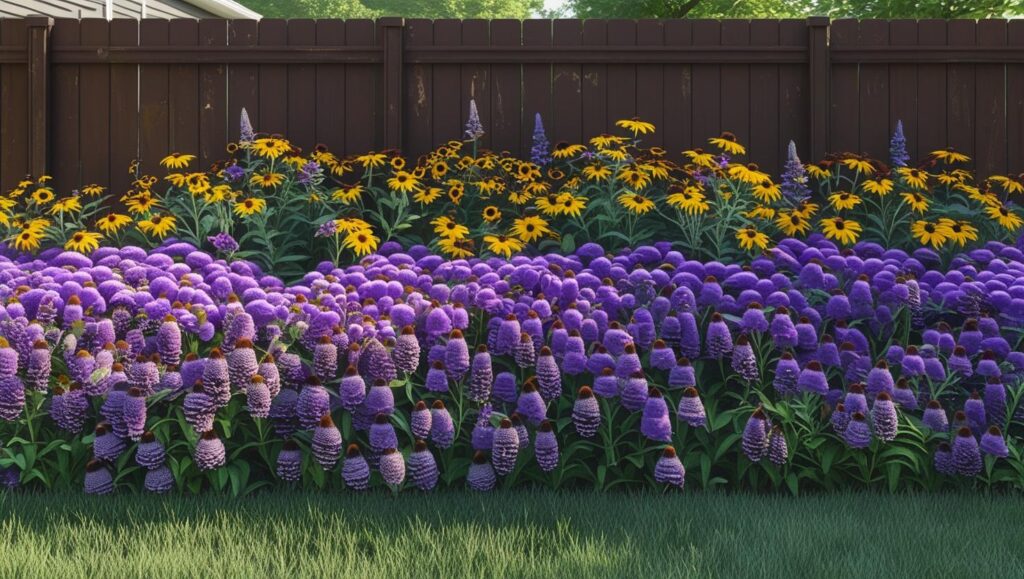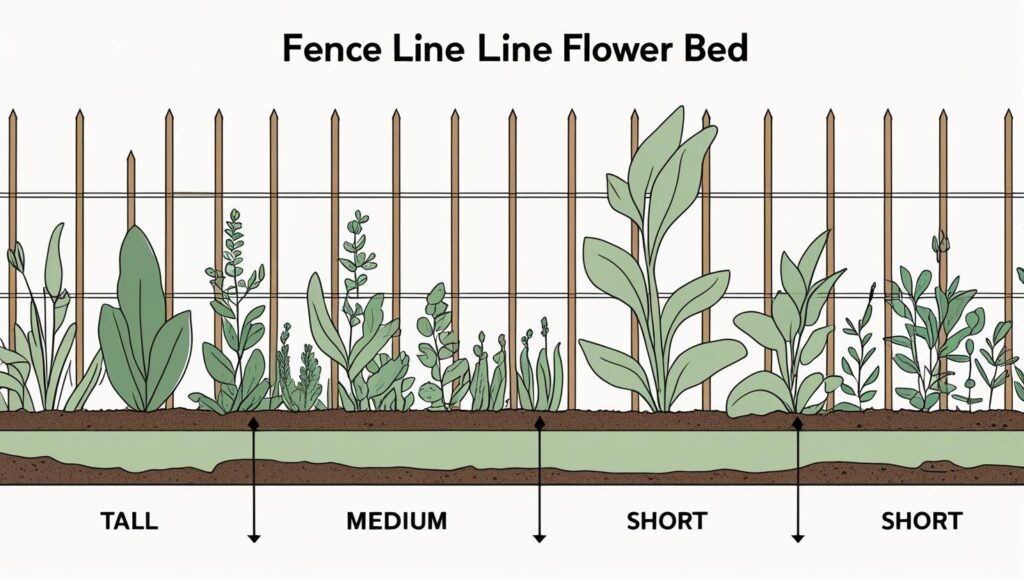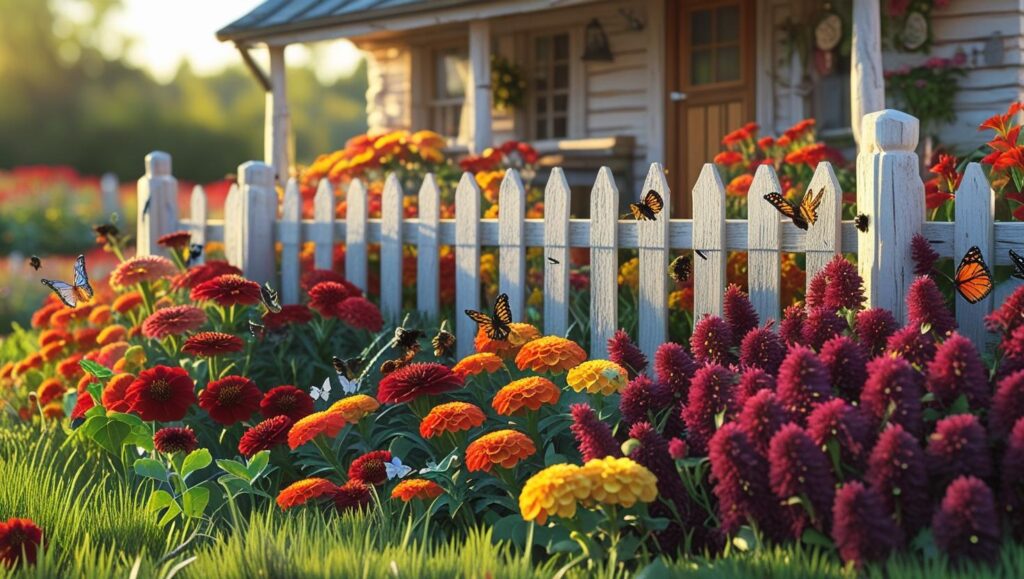A growing number of homeowners are transforming overlooked fence lines into vibrant focal points, moving beyond simple turf and embracing strategic fence line flower bed ideas. This trend reflects a broader shift towards maximizing outdoor living areas and creating ecologically functional gardens. Driven by a desire for both aesthetic beauty and enhanced biodiversity, these border gardens are redefining the edges of properties around the world.

The Growing Trend of Vertical and Border Gardening
The desire to cultivate a personal sanctuary has led to a significant focus on garden and landscape design. For properties with defined boundaries, the fence line—once a purely functional barrier—now represents a prime opportunity for horticultural expression. Landscape experts observe a clear trend towards designs that are not only beautiful but also serve an ecological purpose.
“The demand for native plants is skyrocketing as more gardeners recognize their many benefits,” said Andrew Jager, Marketing Manager for Walters Gardens, in a 2023 statement to Garden Design magazine. This interest is a key driver behind many modern fence line flower bed ideas, which often incorporate pollinator-friendly and low-water native species.
This approach is particularly valuable in urban and suburban settings where space is at a premium. By planting vertically and along perimeters, homeowners can create a sense of depth, screen unwanted views, and support local wildlife without sacrificing lawn space.
Foundational Principles for Successful Fence Line Flower Beds
Before planting, horticultural experts stress the importance of proper preparation. According to guidance from the University of Minnesota Extension, assessing site conditions is the critical first step. Gardeners should evaluate the amount of daily sunlight the fence line receives, as this will dictate plant selection. Fences can create unique microclimates, casting deep shade in some areas while reflecting heat and light in others.
Soil preparation is equally crucial. The University of Florida IFAS Extension advises that flower bed designs should account for mature plant size to avoid issues later. Their experts recommend a layered approach to planting. “The background or tallest layer is typically located along a fence, wall, or property line, so it is usually best to locate this layer first and work forward to the foreground,” a university publication states. A gap of at least 12 to 18 inches should be left between plants and the fence to allow for air circulation and maintenance access.
8 Expert-Endorsed Fence Line Flower Bed Ideas
These design concepts offer a framework for creating beautiful and functional garden borders.

1. The Classic Layered Border:
This timeless approach uses varying heights to create depth. Tall, structural plants like Feather Reed Grass (Calamagrostis x acutiflora) or Hollyhocks (Alcea rosea) are placed against the fence. A middle layer could feature mid-sized perennials like Coneflowers (Echinacea purpurea) and Phlox (Phlox paniculata), with low-growing plants like Catmint (Nepeta x faassenii) or Creeping Thyme (Thymus serpyllum) at the front.
2. The Pollinator-Friendly Haven:
To support bees, butterflies, and other beneficial insects, this garden design focuses on nectar- and pollen-rich plants with staggered bloom times. The U.S. Forest Service recommends planting in clumps. Good choices include Bee Balm (Monarda didyma), Black-Eyed Susan (Rudbeckia hirta), and Salvia (Salvia nemorosa). Including host plants like Milkweed (Asclepias tuberosa) is essential for monarch butterflies.
3. The Low-Maintenance Rock Garden:
Ideal for hot, sunny fence lines with well-draining soil, this idea incorporates rocks and gravel with drought-tolerant plants. Sedums, Sempervivums (Hens and Chicks), and ornamental grasses like Blue Fescue (Festuca glauca) thrive in these conditions, requiring minimal water once established.
4. The Modern Minimalist Design:
This style emphasizes strong lines and a limited color palette. It often features repeating groups of one or two plant types, such as rows of Boxwood (Buxus) shrubs or masses of a single ornamental grass. The goal is a clean, structured look that complements modern architecture.
5. The Edible Garden Fence Line:
Fences provide excellent support for vertical gardening. This design incorporates edible plants, such as espaliered apple or pear trees trained against the fence, climbing peas and beans on a trellis, or a border of robust herbs like Rosemary (Salvia rosmarinus) and Lavender (Lavandula angustifolia).
6. The Shade-Tolerant Retreat:
For fence lines that receive little direct sun, a shade garden can create a lush, tranquil space. Broad-leaved Hostas, feathery Astilbes, and colorful Coral Bells (Heuchera) provide texture and interest. For height, consider shade-loving shrubs like Hydrangea (Hydrangea macrophylla).
7. Climbing Vines and Vertical Interest:
To soften a hard fence line or add privacy, climbing plants are an effective solution. Non-invasive vines like Clematis or annuals such as Morning Glory (Ipomoea purpurea) can be trained on wires or a trellis. This approach maximizes visual impact with a very small footprint.
8. The Four-Season Interest Border:
This advanced landscaping tip involves selecting plants that provide visual appeal throughout the year. It could include spring-flowering bulbs, summer perennials, shrubs with vibrant fall foliage like Fothergilla, and evergreens or ornamental grasses that provide structure in winter. Dan Nelson, lead designer at Embassy Landscape Group, advises thinking about year-round structure first, noting, “Plants with architectural form or unique characteristics like peeling bark or attractive seed pods can keep the border from looking empty.”

Common Pitfalls and How to Avoid Them
Even with the best intentions, gardeners can make mistakes. One of the most common issues, as noted by gardening expert Joe Lamp’l of joe gardener®, is underestimating a plant’s mature size. “If you didn’t plan ahead for your plant to reach its full potential, you will have to work much harder later on,” he advises. Reading plant tags and spacing accordingly is essential to prevent overcrowding, which leads to poor air circulation and increased disease risk.
Another frequent error is planting too close to the fence. This not only hinders plant health but also complicates fence maintenance. Finally, gardeners should avoid choosing invasive species. While they may offer a quick screen, aggressive growers can damage fence structures and spread uncontrollably into neighboring yards.
The enduring appeal of gardening lies in its ability to adapt and evolve. By treating the fence line not as an endpoint but as a canvas, homeowners can create dynamic, beautiful, and purposeful landscapes that enhance their homes and local ecosystems.
The surprising longevity of an indoor icon: How old can a jade plant get indoors?
